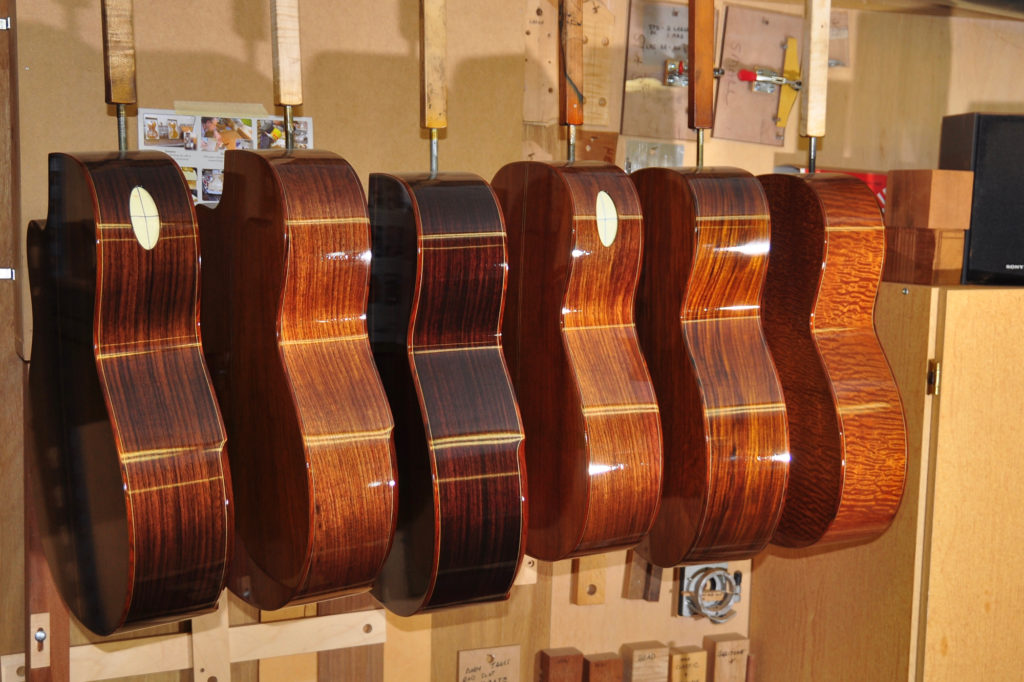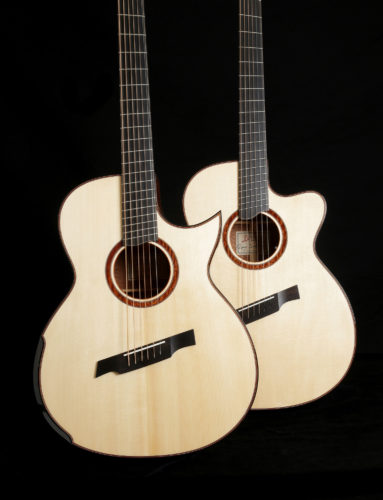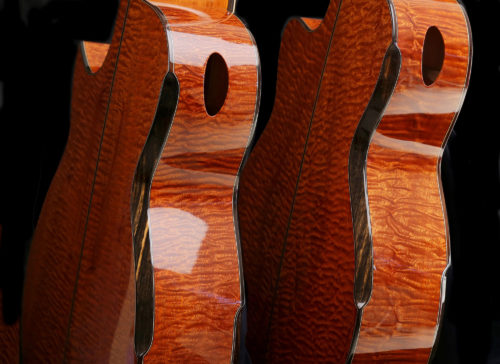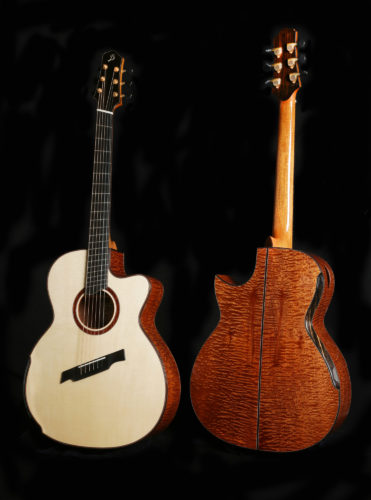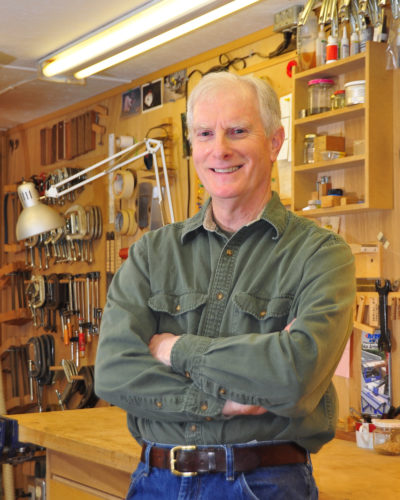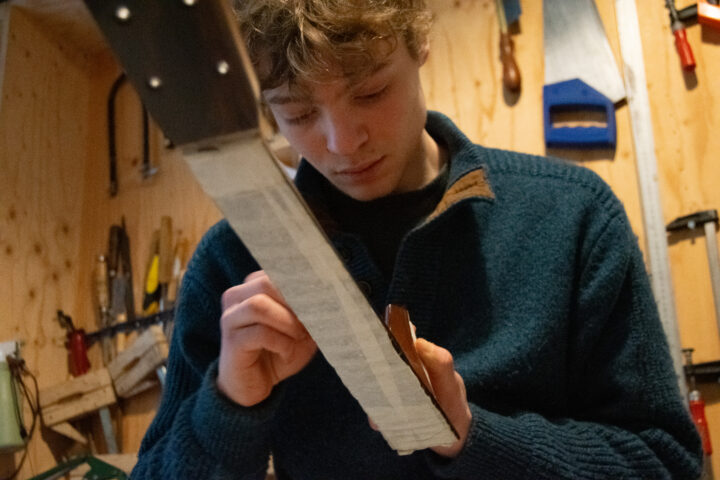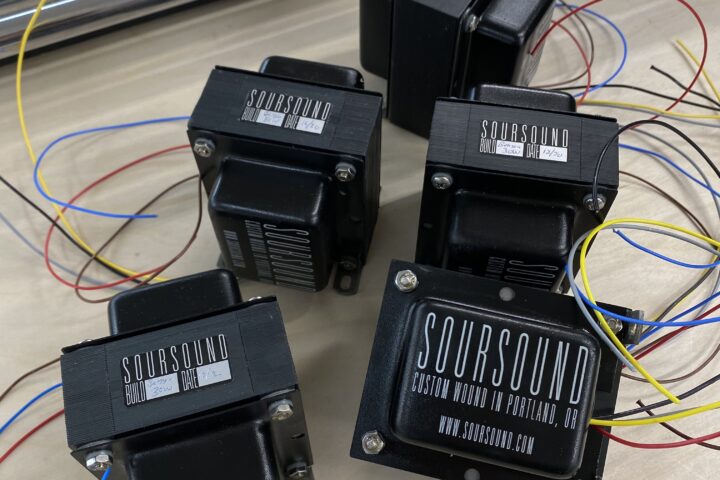There are a whole lot of reasons we’re excited about the upcoming La Conner Guitar Festival (debuting in May 2017, just up the road from us here in Seattle), not the least of which is getting our grubby mitts on one of Marc Beneteau’s instruments. Marc’s been building beautiful guitars since way back in the day, setting up his first shop in Ottawa, Ontario in 1974. His designs are classic with inventive twists (witness his “M” model–an OM on steroids, enlarged to 16″ wide at the lower bout, “giving it an expanded bass response”), stretching beyond tradition, built from timbers traditional and unusual, incorporating the modern amenities (sound ports, bevels, et cetera). Such was our anticipation that we could not help but reach out to Marc for an installment of the Bench Press. Think of it as a warmup…
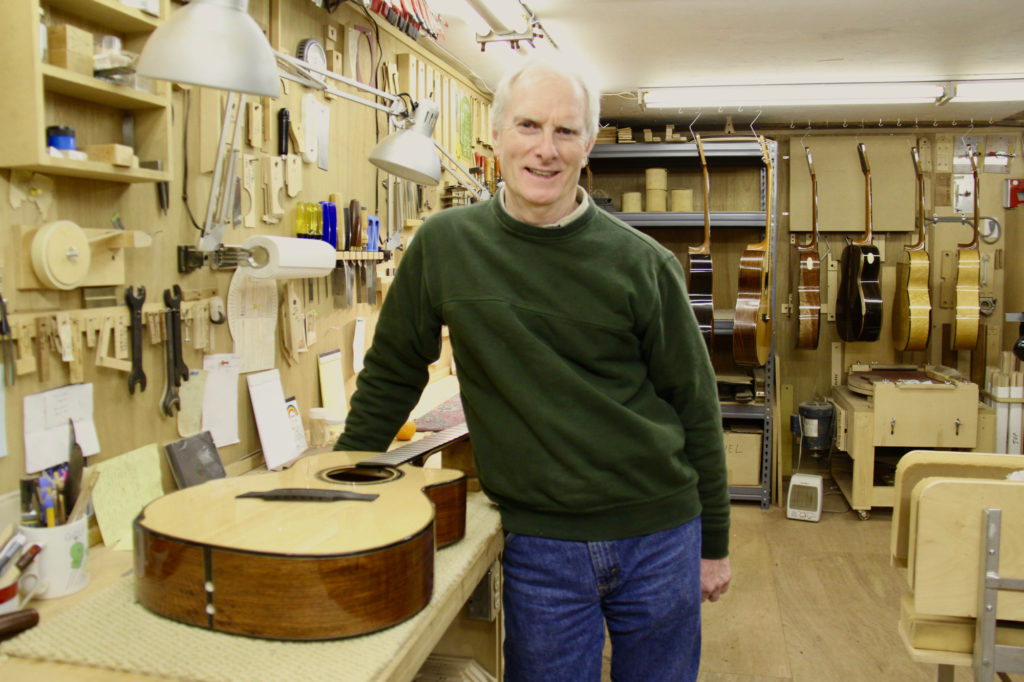
Fretboard Journal: What’s on your bench right now?
Marc Beneteau: At the moment I have four guitars in construction with a decent mix of models/woods. They include a Honduran rosewood/Sitka 0-12, a Padouk/Sitka OM, a Bocote/Sitka M model cutaway and a Brazilian rosewood/Adirondack M cutaway. You probably noticed that three of the guitars have Sitka tops. I currently have a good stock of Alaskan Sitka spruce that I love to work with. Very dependable! The first three are fairly straightforward but the last one has a few bells and whistles to keep things interesting.
FJ: How did you get started?
MB: I was playing electric guitar in the early 1970s while living and gigging in Vancouver [British Columbia]. A block from my house was Bill Lewis Music. They were not only an excellent standard music store but were also into instrument making. This sounded interesting to me at the time but no more. After moving back to Ontario I decided to pursue guitarmaking and ordered my first materials from Bill Lewis Music. That was my start and it’s hard to say if I would have chosen guitar making if I had not come in contact with that music store. I am fairly certain that Bill and his brother sold their business to a group in California and that was the start of Luthier’s Mercantile.

FJ: Where do you find inspiration?
MB: I find inspiration in the challenges of this crazy craft/vocation. There is always so much more to learn and even after 40-plus years not a week goes by that I don’t learn something new to add to my knowledge base. This constant learning is what keeps my passion alive. What more can one ask for?
FJ: Do you have a favorite guitar that’s crossed your bench?
MB: Not really. Every good guitar has unique qualities that can make it special. Whenever I read that such and such a tonewood is the Holy Grail I have to bite my tongue. There are so many factors that go into making a guitar that it would be much too simple to say that one way of building has all the answers. I will add that I did have one experience with a guitar that I will always hold dear. Before I started building guitars I was getting more into acoustic guitar after being mostly an electric player. I travelled from my home town of Windsor, Ontario, a blue collar rock & roll city, to a music store in Detroit to pick out a used guitar. After trying several decent instruments the salesman brought out a Martin D-18S. This was a 12-fret dreadnought and I immediately was taken by its full, resonant tone. Years later, once I was established as a builder I built my own version of this model. A nice memory… I wonder where it is now?
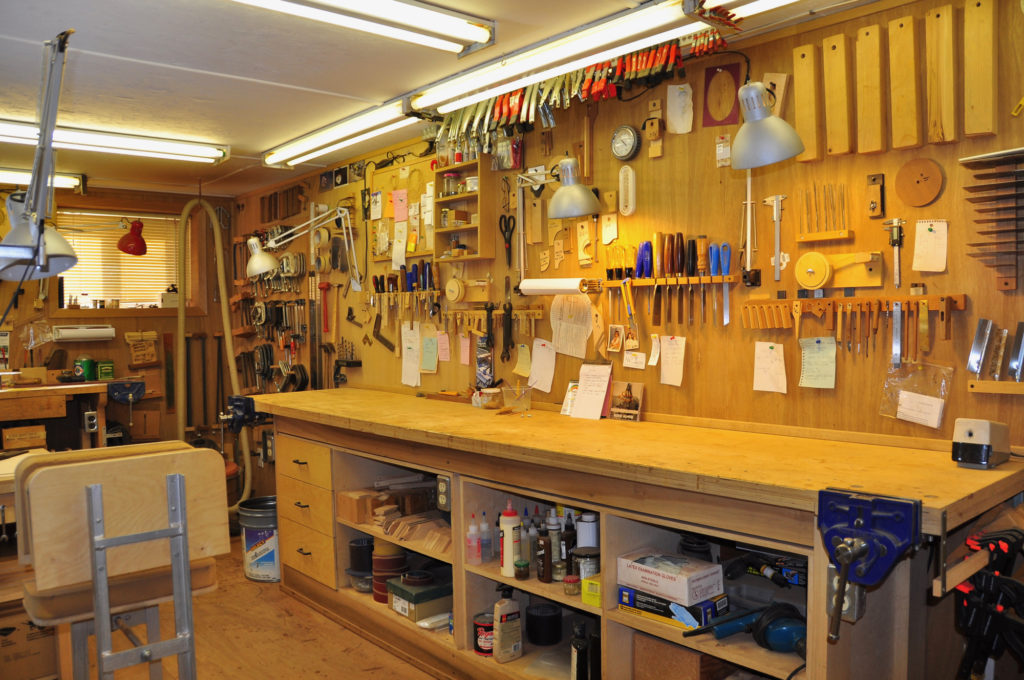
FJ: Can you tell us about your shop?
MB: I live in St. Thomas in southern Ontario, approximately halfway between Toronto and Detroit. My shop takes up the entire basement of our 100-year-old home, which we’ve lived in since 1986. Having the shop at home is a two-edged sword: I am never far way from my work so it’s hard to leave it completely; on the other hand the commute is really easy… especially in the winter!
FJ: Do you have a particular philosophy about wood/materials?
MB: I love variety so I’m really happy to have different models and material combinations going. This keeps things interesting. We are entering a new phase with materials where some of the age-old favorites are more and more restricted. This is making us look elsewhere for alternatives. I should clarify that I am a wood person, through and through. I’ll leave the use of man-made materials to someone else. Another area that I believe in is the process of the natural aging of instruments. I love the transformation that takes place as the tone of an instrument opens up and gets richer. This is naturally a slow process (though it begins almost immediately) and is wonderful to experience. I especially notice it with guitars that return to my shop after an extended period of time. This might go against the grain in this era of “instant gratification” but maybe I’m just too old!
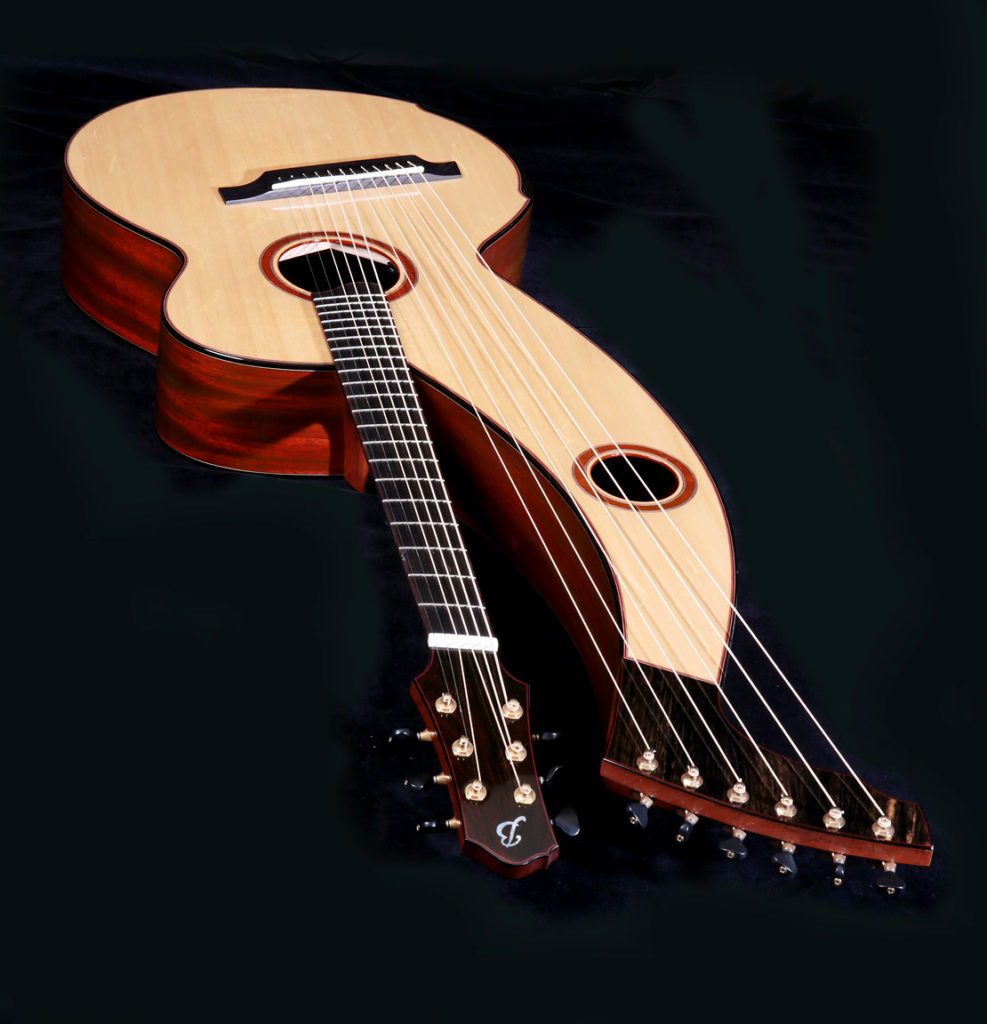
FJ: Are there any upcoming projects that you’re particularly excited about? Any plans to build more harp guitars?
MB: The Harp Guitar for Don Ross was a challenge and took two years to build, working on the side. So far I have not had the opportunity to build another one but would welcome the chance to apply what I learned the first time around. I will be taking part in the La Conner Guitar Show, May 12-14 in Washington state and we will be bringing a couple of guitars with us. One is the Padouk/Sitka OM, currently in construction. Though I haven’t made my final decision on the second one, I am leaning towards a Concert Standard cutaway with flamed Granadillo back & sides. This stunner of a tonewood is both beautiful and sounds great to boot. Stay tuned! Other than that, there are sure to be more exciting possibilities around the next corner.
